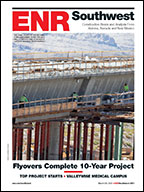 |
| (Photo courtesy of FEMA) |
The Federal Emergency Management Agency is preparing to release a multi-hazard risk assessment and loss estimating tool that comes with extensive base reference data, yet can also incorporate local data supplied by users.
The product is the fruit of a FEMA effort to provide individuals, businesses and communities with information and tools to proactively mitigate hazards and prevent losses from disasters.
FEMA developed its initial product, HAZUS, or Hazards U.S., in 1997 to help planners estimate potential damage from earthquakes. It uses methodology developed in partnership with the National Institute of Building Sciences.
The new product, HAZUS-MH, which FEMA plans to start distributing free in March, uses a geographic information system approach to organize data and help planners evaluate development decisions in light of potential losses at a given location, not only from earthquakes, but also from river or coastal flooding and hurricane winds. Links also will be provided to other hazard models for estimating exposure of people and property to dam failures and chemical hazard plumes.
The software product comes with default data for U.S. geographic locations based on census information, flood plane maps and other resources. It can be linked to planners' existing GIS systems and enhanced with locally gathered data.
"The whole premise is that you have all this default data, but you can take it to the next level and bring in your own data to make it better and more accurate," says Adrienne Sheldon, project engineer with Greenhorne and O'Mara, an engineering firm in Greenbelt, Md., hired to help with outreach efforts.
A series of training sessions is scheduled to take place at a FEMA facility in Emmitsburg, Md., in March, April, June, August and September.
See www.fema.gov/hazus for details.


Post a comment to this article
Report Abusive Comment